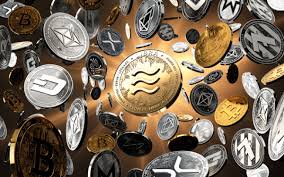Finding new cryptocurrencies beyond popular names like Bitcoin or Ethereum can be challenging—especially if you’re still learning the ropes.
But with the right tools and strategies, you can spot promising new tokens before they hit the mainstream.
Here’s a comprehensive guide to help you discover and evaluate new crypto investment opportunities.
🔑 Key Takeaways
- Crypto offers many investment opportunities due to the ever-expanding market.
- Multiple sources should be used to vet a new cryptocurrency.
- Exchanges, data aggregators, and social media are effective platforms to find new tokens.
- Tools like Kryptview, BSCCheck, and Token Sniffer help assess a coin’s legitimacy.
- ICOs, NFTs, DeFi tokens, and ETFs offer additional exposure to new digital assets.
🔍 Where to Find New Cryptocurrencies
Before diving in, ask yourself:
- Does crypto align with your long-term investment goals?
- Is it appropriate for your portfolio risk level?
- Are you comfortable exploring ICOs, NFTs, or DeFi platforms?
Now, let’s break down the best places and tools to uncover new coins.
1. Cryptocurrency Exchanges
Crypto exchanges like Binance, Coinbase, Crypto.com, Gemini, and Kraken often list new tokens. Watching their “New Listings” or announcements page can help you get in early. Some exchanges also allow you to stake, trade, or vote on upcoming listings.
2. Data Aggregator Sites
Websites like CoinMarketCap and CoinGecko provide real-time data on prices, volume, and market caps. They also list newly launched cryptocurrencies and show historical data for analysis. These platforms are essential for spotting trends and measuring social sentiment.
Tip: Watch out for low-volume coins with high price swings—these may lack liquidity.
3. Social Media & Online Communities
Platforms like X (formerly Twitter), Telegram, Reddit, and Discord are hotspots for real-time updates from developers and communities.
- Use Twitter/X keyword alerts for phrases like “new crypto,” “pre-sale,” or “airdrop.”
- Join Telegram groups focused on specific blockchains like BNB Chain or Ethereum L2s.
Social media is fast, but be cautious—it’s also a place where hype and scams thrive.
4. Websites & ICO Trackers
Sites like TopICOList, TradingView, and DEX Screener offer curated updates on:
- Upcoming token sales
- Community engagement
- Technical chart analysis
5. Analysis & Security Tools
Use these tools to analyze token legitimacy:
- Kryptview: Offers community insights and token metrics.
- BSCCheck: Specifically checks Binance Smart Chain tokens.
- Token Sniffer: Detects potential scams or “rug pulls” using contract analysis.
- Example: A flagged token may have 95% of liquidity locked or burned but still raise red flags if the creator holds a large portion of the supply.
6. Decentralized Finance (DeFi) Platforms
Many DeFi platforms launch their own tokens:
- MakerDAO, Aave, Uniswap, Curve are examples of well-known DeFi projects.
- These platforms often use governance or utility tokens with real-world applications.
You can find emerging DeFi coins through DEX listings, launchpads, or ecosystem grants.
7. NFT Marketplaces
NFT platforms like OpenSea, Rarible, and SuperRare offer tokenized assets—some of which are tied to new cryptocurrencies or blockchains.
Additionally, sports and entertainment brands such as the NBA’s TopShot or NFL’s All Day are launching their own token ecosystems.
8. Initial Coin Offerings (ICOs)
ICOs allow investors to buy into a cryptocurrency project in its early stages. However, they are high-risk and must be vetted thoroughly.
- Make sure the ICO complies with regulatory rules (especially in the U.S.).
- Read the whitepaper, team bios, and tokenomics carefully.
9. Crypto ETFs and Futures
If you prefer less direct involvement, crypto ETFs and futures provide exposure to crypto prices through traditional stock exchanges. Examples include:
- Bitcoin Spot ETFs (approved by the SEC in Jan 2024)
- Ethereum Spot ETFs
These offer lower-risk entry points and are easier to buy/sell than physical tokens.
📊 How to Research a New Crypto Coin
When evaluating a new crypto, ask:
1. What Is the Use Case?
- Ethereum (ETH): Used for smart contracts, DeFi apps, NFTs
- Bitcoin (BTC): Digital store of value and payment system
- New coins should solve real problems or improve existing systems
2. How Liquid Is It?
Liquidity allows you to buy or sell quickly without huge price changes.
- Check 24-hour trading volume
- Review listings on multiple exchanges
3. Does It Hold Value (Tangible or Intangible)?
- Monetary value (e.g., gains)
- Emotional or social value (e.g., NFT music tracks or sports tokens)
Other Factors to Evaluate
| Factor | What to Check |
|---|---|
| Tokenomics | Supply cap, burn mechanisms, inflation control |
| Development Team | Transparency, experience, activity on GitHub |
| Community Support | Follower count, engagement on social media |
| Roadmap | Future plans, partnerships, product releases |
| Legal Compliance | Is it regulated, or at risk of SEC intervention? |
🚀 What Are Some of the Newest Cryptocurrencies?
As of March 1, 2025, new coins listed on Binance include:
- Solana Treasury Machine (STM)
- 101M (101M)
- AND IT’S GONE (GONE)
- Dog on Base (DOG)
- Finvesta (FINVESTA)
These may not be blue chips yet but show early signs of momentum.
❓Which Crypto Can Give 1000× Returns?
No one can guarantee a 1000× return—but low-cap coins with real use cases, strong community support, and low initial supply are good candidates. Always DYOR (Do Your Own Research).
✅ Final Thoughts: The Bottom Line
There are countless new crypto projects emerging every day, and while some may become the next big thing, others could be scams or fads. The best way to approach investing in new cryptocurrencies is through thorough research, diversification, and caution.
If it sounds too good to be true—it probably is.
Use the tools and platforms listed above, trust reliable sources, and never invest more than you’re willing to lose.
Join Our Political Forum official 2025 WhatsApp Channel To Stay Updated On time https://whatsapp.com/channel/0029VaWT5gSGufImU8R0DO30


